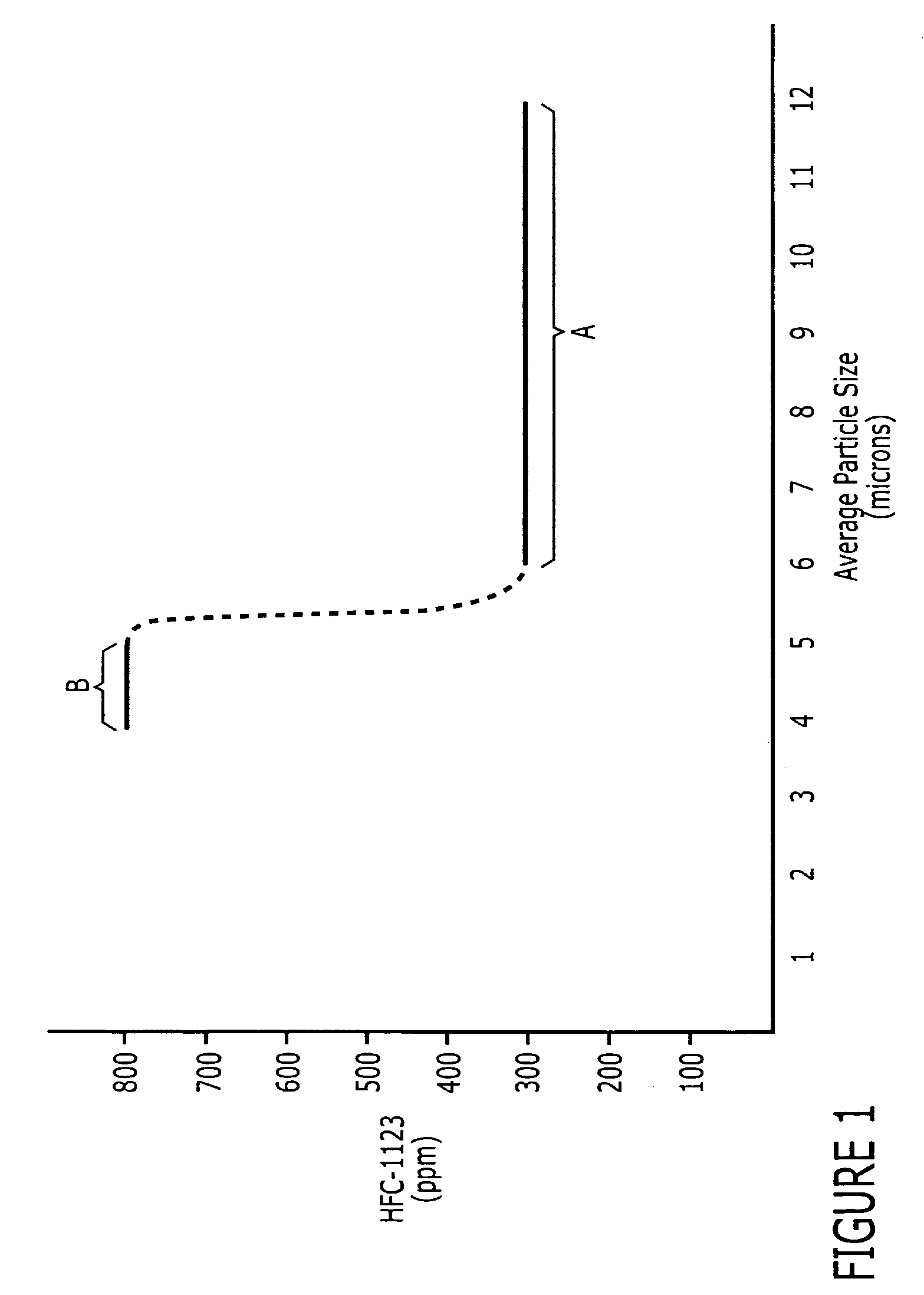Preparation of halo-olefin
a technology olefins, which is applied in the field of dehalogenation of halogenated organic compounds, can solve the problems of increasing distillation yield losses, process downtime, and difficulty in meeting product quality specifications, so as to increase the effective surface area, improve yield, and increase the effect of distillation yield losses
- Summary
- Abstract
- Description
- Claims
- Application Information
AI Technical Summary
Benefits of technology
Problems solved by technology
Method used
Image
Examples
example 1
[0031]This example illustrates the high yield and relatively low formation of impurities realized by using an agent having average particle sizes within a preferred average particle size range.
[0032]1500 lbs of standard grade zinc dust from US Zinc (Houston, Tex.) with an average particle size of 7 microns was slurried with methanol through agitation with a zinc to methanol ratio of 1:3. The slurry was then charged to a 1000 gallon reaction vessel. The reactor was maintained at 150° F. and 22 psig. High purity CFC-113 from Honeywell (Morristown, N.J.) (99.9% pure) was added in excess at a rate of 2–3 gallons / min over 2–3 hours. The product CTFE-1113 and its impurities were recovered as product vapor stream and recovered using standard distillation. The conversion (yield) of the zinc dust was measured using the captured product amount and the amount of zinc charged to the batch. The conversion (yield) for the zinc was 87%. HFC-1123 was formed at the concentration of 300 ppm in the CT...
example 2
[0033]This example illustrates the high yield and relatively low formation of impurities realized by using an agent having average particle sizes within a preferred average particle size range.
[0034]This experiment was conducted essentially the same as Example 1, except the zinc dust had a particle size of 6 microns. This zinc dust was slurried with methanol and charged to a reaction vessel. CFC-113 was added in excess and product CTFE-1113 and its impurities were recovered as product. The conversion (yield) of the zinc dust was measured using the captured product amount and the amount of zinc charged to the batch. The conversion (yield) for the zinc was 87.5%. HFC-1123 was formed at the concentration of 300 ppm in the CTFE-1113, which met product specifications.
PUM
| Property | Measurement | Unit |
|---|---|---|
| particle size | aaaaa | aaaaa |
| particle size | aaaaa | aaaaa |
| sizes | aaaaa | aaaaa |
Abstract
Description
Claims
Application Information
 Login to View More
Login to View More - R&D
- Intellectual Property
- Life Sciences
- Materials
- Tech Scout
- Unparalleled Data Quality
- Higher Quality Content
- 60% Fewer Hallucinations
Browse by: Latest US Patents, China's latest patents, Technical Efficacy Thesaurus, Application Domain, Technology Topic, Popular Technical Reports.
© 2025 PatSnap. All rights reserved.Legal|Privacy policy|Modern Slavery Act Transparency Statement|Sitemap|About US| Contact US: help@patsnap.com

